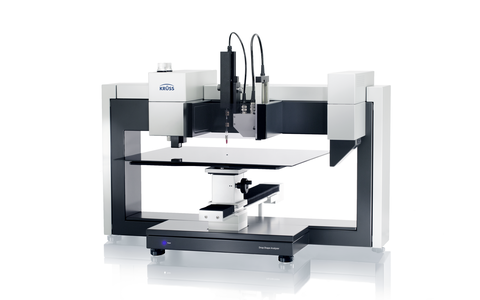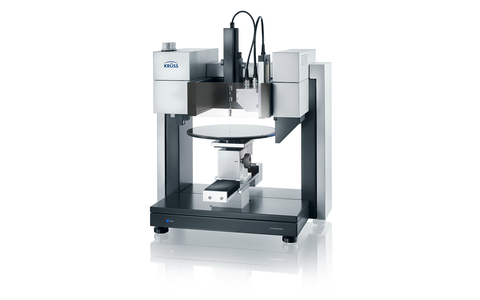
Coating of polymers
Methods for measuring wetting and adhesion
Polymers compete with traditional materials in almost all walks of life. Many coating applications for plastics, such as painting, printing and bonding, define requirements for the development of the materials and for the coatings. High quality is the result of specific interface measurements and the use of materials corresponding to these measurements.
Typical polymer-coating applications
- Painting of plastics as a design element
- Painting of packaging and films
- Bonding with glass, metal, textiles or other synthetic materials
- Superhydrophobic coatings for self-cleaning surfaces
- Coating of contact lenses for comfort when wearing and good oxygen permeability
Energy balance between plastic and coating
A frequent problem with plastic coating is the incompatibility of the materials. The polymers used are difficult to wet, and water as the basis of many coatings provides poor wetting. To make both sides compatible, the surface free energy of the plastic is increased by pre-treatment and that of the coating reduced by the addition of surfactants. Our measuring equipment provides vital information for both tasks.
Surface free energy of the polymer
A range of methods is used to increase the surface free energy of plastics:
- Corona treatment
- Plasma treatment
- Flame treatment
- Chemical action
The polar fraction of the surface free energy, which is accessible by measuring the contact angle, is particularly informative, as this reflects the affinity with aqueous media. We have developed stationary laboratory units and non-destructive, mobile instruments for use on site for measuring the contact angle.
Surface tension of the coating and its adhesion and stability
Our tensiometers are used to analyse the surface of the coating phase, the liquid coating. The effectiveness and efficiency of the surfactants used are of interest here. The polar and non-polar (disperse) fractions of the surface tension can also be determined. The combined results for the solid and liquid phase give an informative overall picture:
- The work of adhesion is a measure of the initial adhesion of a coating or a bond.
- The interfacial tension goes hand-in-hand with the long-term stability; for a permanent bond, it must be as small as possible.

























